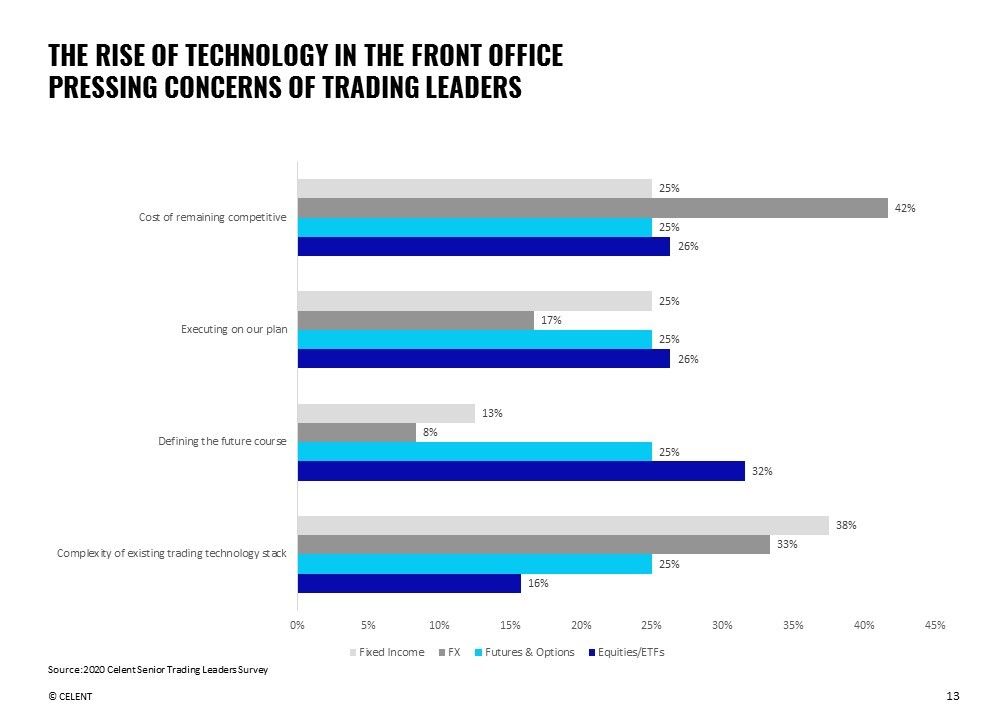Celent in conjunction with Nasdaq interviewed and surveyed 50 senior front office trading and technology staff at global trading firms, broker dealers, and trading firms. The research shows trading leaders trying to maximize the value of their trading technology, investing by desiloing across asset classes , making strategic choices with key partners, leveraging technology to create competitive differentiation, paths to outsourcing non-core functions in the front office, and internal processes that tie the business closer to technology.
There are many quantitative findings including:
- They will increase their front office trading technology spend by 9.8% CAGR over the next three years.
- We have moved from a time of cost cutting to a period of focussed, revenue growth for more than two-thirds of participants.
- Trading technology is a key competitive differentiator for 82% of those surveyed.
- Areas of new technology that are highest spending priorities today are cloud 66%, followed by AI/ML at 27%. In three years, ML/AI will be the highest priority at 79%.

We explore the current and future state of capital market technology with senior sell side trading leadership-the burdens, opportunities, and challenges that trading leaders are facing.
Participants discussed their perspectives on the regulatory, competitive, and technology changes that have emerged and how this is driving new business and service models for broker/dealers, investment banks, and trading firms.
Key topics, as trading leaders consider moving forward in a rapidly changing trading world included complex decisions around highly fragmented markets that require advanced logic to create the proper pricing, risk and latencies. Heads of trading discussed converging and common trading themes across asset classes. We ask how decision makers are adopting to optimize market infrastructure, matching technology, trading, compliance, regulations, and surveillance.
Furthermore, there are discussions of the type of trading platforms that will define the future state of the capital markets. We explore why and how traditional roles of buy/sell/infrastructure and software providers are changing. We analyze the convergence of trading models, liquidity, algos and the nature and extent of impact on different players in the ecosystem.





